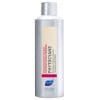
Image by Getty
With the normalisation of cosmetic procedures in today’s world, it’s easy to be flippant about freezing and filling your face. But while going under the needle seems less scary than the going under the knife, it can still be a big decision. Aesthetic Physician Dr. Ravi Jain, founder of Riverbanks Wellness Clinic, takes Bazaar through the questions to ask yourself before you commit.
1. Why have I made this decision right at this moment?
“This is one of the first questions I ask new clients. Why have you decided to come to see me today? By asking this I can understand your specific reasons and set expectations in terms of what treatments are available and suitable for you. It also helps set the foundations to build a long-term skin plan with you.”
2. What results am I expecting from this treatment direction?
“Are you being realistic in your perceptions of the results of the procedure? Do you want to just feel fresher or to look several years younger? Do you want to change your features or enhance them? When using injectables correctly, it shouldn’t mean you will look physically different, and so by setting realistic expectations beforehand, it establishes an honest relationship with your practitioner from the get go.”
3. Do I fully understand the treatment?
“Most of my clients, even the ones who have had fillers previously, do not realise that there are different forms of filler. Dermal fillers are made of hyaluronic acid and come in a whole array of strengths with degrees of firmness and softness and with different consistencies for lifting abilities. For example, there are different types to lift the cheekbone or emphasise the chin, and others to get rid of a crease or super fine line, and some simply boost the hydration levels in the skin. Not one filler does everything. To get the most natural effect you have to use a variety to treat the various skins concerns.”
4. Am I aware of any side effects?
“Side effects with Botox injections are rare and minimal effects such as bruising with fillers only affects one in 20. Allergic reactions and infection are now so uncommon due to the new modern formulas. However, you must go to a medical professional. If injections are administered incorrectly, the worst-case scenario could be blindness. This is caused when a small amount of filler is accidentally injected into or around a blood vessel that then blocks the blood supply to the eye. To go to an experienced medical professional is the only way to minimise these risks.”
5. Will I look older if I decide not to continue the appointments?
“This is a common question and the answer is absolutely not. If you have only had one or two treatments, then you will just look as you did before. However, if you have been having treatments over two-three years, then your skin can look younger than before you started because some treatments help to permanently rejuvenate your skin over time.”
6. If I come in for one treatment, will I decide I want something else too?
“Ageing is inevitable and there is no one-off treatment that freezes time forever. Our signs of ageing develop continually and present themselves as concerns such as wrinkles, pigmentation changes, loss of elasticity and thinning of tissues such as skin, fat, muscle and bone. There are different types of treatments to address each one of these issues. Botox treatments are for excessive wrinkles and dermal fillers are for tissue thinning and fatty volume loss.”
7. How frequently can I expect to repeat the treatments?
“One injectable procedure may give dramatic results, but anyone interested in changing their overall skin health and appearance needs to consider an on-going commitment with regular maintenance treatments. Botox style treatments are usually repeated every three-four months for longer term results (this doesn’t mean one has to be frozen indefinitely because this usually indicates excessive treatment), while dermal fillers are repeated every six-12 months. On each appointment, you may not always need treatment on the same areas because different parts of the face age at different rates so the overall goal should be to deliver optimal skin health, with natural results.”
8. Are the treatments addictive?
“Medically speaking, the ingredients used are non-addictive. However, as with any experience you enjoy and that makes you feel good, you want to repeat it. I liken the feeling to how you feel after a visit to the hairdressers or if you bought a new luxury item.”
9. How do I choose my practitioner?
“This is very difficult for those who have not got recommendations from friends. We have all been victims to effective marketing and this doesn’t mean the most visible practice is the best. I suggest you choose someone whose real-life work you like, and by talking to friends you know who have had treatments and look the most natural. It is also not just about the aesthetics – find out how they feel after the treatment.
“Most importantly, make sure they are qualified. Practitioners including doctors andnurses should be members of the British College of Aesthetic Medicine or The British Association of Cosmetic Nurses. Create a shortlist and arrange to meet one-three of them before you choose to go ahead. Always follow your gut instinct at the initial meeting and if you need further help, then look at independent review sites such as realself.com and consultingroom.com.”
This article originally appeared on Harper’s BAZAAR UK.



